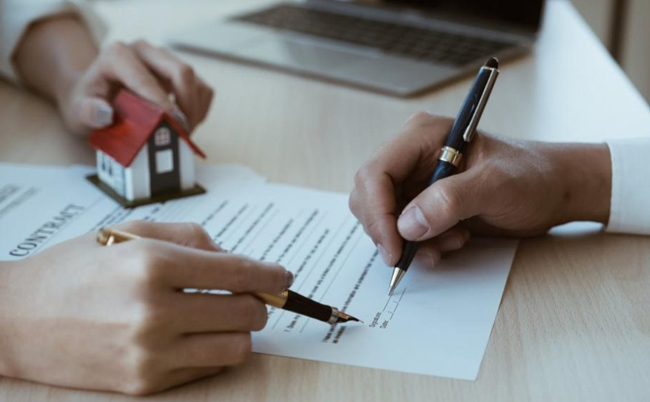Buying a home can feel like a race you’re always one step behind. When you finally find the appropriate property, deposits seem too exorbitant, and prices appear to go up every day. So, how can you make that huge investment seem smaller and easier to handle without giving up on your dream of owning a home?
We have some ways added in this guide to help you ease the financial stress over time and get into the market sooner. This makes the process of going from offer to ownership easier and less stressful.
Let’s explore the most effective ways that will make your property buying process easier.
Tips For Saving For A House Deposit More Quickly
Step 1: Save and Structure Your Deposit
Most lenders in Australia request a down payment of 5% to 20% of the price of the house. For example, if you want to buy a $600,000 house, you might need between $30,000 and $120,000 up front.
If saving the full amount seems difficult, some developers and lenders offer flexible deposit arrangements. While the property is being built, you can pay the deposit balance in instalments while you secure the property with a smaller initial payment.
This can be a smart way for first time buyers to get into the market faster, lock in today’s prices, and pay for the house over time.
Step 2: Get Your Finances in Order
Prior to looking at properties, identify your budget. This includes:
- Assessing your total budget like stamp duty, mortgage registration fees, insurance, and conveyancing fees.
- Obtaining loan pre-approval gives you a clear spending limit and makes your offers more appealing to sellers.
- Council rates, utilities, maintenance, and strata fees (if applicable) should also be considered.
Being financially prepared ensures you can move quickly when you find the right property.
Step 3: Research the Market
Buying a property isn’t just about falling in love with a home, you should also consider the best financial decision. Consider:
- Location: Having easy access to public transportation, work, school, and other amenities is an important aspect of living.
- Market conditions: Understand fair pricing by researching recent sales.
- Property type: Decide if you’re after a house, townhouse, or apartment and how each aligns with your needs.
You can compare options and identify good-value opportunities using online property portals, local agents, and market reports.
Step 4: Engage a Conveyancer Early
Engaging a conveyancer early is one of the most valuable steps you can take in the property buying process. A conveyancer specialising in property law ensures your purchase meets all regulatory requirements.
Your conveyancer will:
- Review and explain the Contract of Sale and Vendor’s Statement.
- Check for title problems, zoning rules, or easements by doing searches.
- Handle settlement arrangements with your lender and the seller’s representatives.
Getting professional conveyancing advice early can help you avoid unpleasant surprises.
Step 5: Inspect the Property Thoroughly
Even if a home looks perfect, there may be hidden issues. Arrange:
- Building inspections are conducted to detect structural defects, roof problems, or faulty wiring.
- Infestations such as termites, rodents, and other pests can be identified by inspection.
These inspections allow you to negotiate repairs or adjust your offer if problems are found.
Step 6: Make Your Offer
When you’ve found the right property:
- Private treaty sale: Submit your offer in writing to the agent, usually with proof of finance.
- Auction: Register as a bidder, prepare to sign the contract, and pay a deposit immediately if you win.
Work closely with your conveyancer to ensure your offer includes any conditions that protect your interests.
Step 7: Review and Sign the Contract
Before signing:
- Make sure your conveyancer looks over all of the terms and conditions.
- It’s possible to agree to special conditions like “subject to finance” or “subject to building & pest inspection.”
- Make sure you understand the payment time and deposit amount.
Once signed, the contract becomes officially binding.
Step 8: Understand the Cooling-Off Period
Most Australian states offer a cooling-off period (generally 3–5 business days) for private treaty sales, allowing you to withdraw from the contract.
Key points:
- No cooling-off period applies to auctions.
- If you withdraw, you may forfeit a small portion of the purchase price.
Consider hiring conveyancers like Eagle Peak, who will help you understand your rights and responsibilities.
Step 9: Finalise Finance and Insurance
After signing the contract:
- To finish your house loan, we recommend that you give it to your lender.
- Get building insurance; some lenders need it before the payment process can begin.
Professional conveyancers will work with your lender to ensure the money is ready for the day of settlement.
Step 10: Conduct a Pre-Settlement Inspection
You have the right to look at the property a day or two before settlement. It ensures it is still in the same condition as when you agreed to buy it.
If issues are found, such as damage or missing fixtures, your conveyancer can negotiate remedies before funds are transferred.
Step 11: Settlement Day
On settlement day:
- The rest of the money for the deal is sent to the seller by your lender.
- Your conveyancer files the papers needed to change the regulatory ownership.
- You get the keys and become the official owner of the property.
Why Expert Conveyancing Advice Matters
It is possible to handle the property buying process on your own, but Australian property law is complicated and time-sensitive. If you skip even one step, the settlement could be delayed or even put the buy at risk.
From making an offer to taking ownership, professionals at Eagle Peak look out for your best interests and make sure everything goes smoothly.
Final Thoughts
Buying a home in Australia is a big step, but it can be a really great experience if you do your homework, plan, and get help.
When buying a property, it can be beneficial to have a conveyancer in Melbourne on your side. They will take care of the regulatory stuff, make sure the process stays on track, and give you peace of mind from the time you sign the contract until you move into your new home.
FAQs
Q1: How Early Should I Hire a Conveyancer?
You should hire a conveyancer before making an offer so that they can review the document and advise you of any possible risks.
Q2: Do Australian First Home Buyers Get Any Benefits?
Yes. In some states and territories, first-time home buyers may be able to get grants, lower stamp tax, or both. Your conveyancer can explain the options available to you.
Q3: Is a Building Inspection Mandatory When Buying a Property?
Identifying any structure that you or pest issues before you commit to the purchase is highly recommended.











